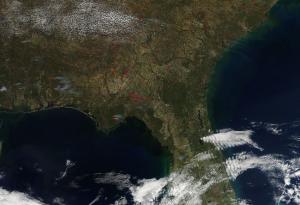Science
Can material rivaling graphene be mined out of rocks? Yes, if...

Layers of molybdenum disulfide stand better prospects of finding applications in electronics than graphene. Molybdenum disulfide occurs in nature as molybdenite, crystalline material that frequently takes the characteristic form of silver-colored hexagonal plates.
- Read more
- 304 reads
Concerns and Considerations with the Naming of Mars Craters
- Read more
- 408 reads
Production of Bioactive Material for Quick Treatment of Bone Damages

- Read more
- 388 reads
Caltech Researchers Create Light-Bending Silicon Chip: Bending the Light with a Tiny Chip

An image of Hajimiri's light-bending silicon chip.
- Read more
- 326 reads
NASA Data Sheds New Light on Changing Greenland Ice

The calving front of Greenland’s Jakobshavn Glacier seen during an IceBridge survey flight in 2012.
- Read more
- 325 reads
NASA's WISE Survey Finds Thousands of New Stars, But No 'Planet X'

A nearby star stands out in red in this image from the Second Generation Digitized Sky Survey.
- Read more
- 281 reads
NASA's THEMIS Discovers New Process that Protects Earth from Space Weather

NASA's THEMIS mission observed how dense particles normally near Earth in a layer of the uppermost atmosphere called the plasmasphere can send a plume up through space to help protect against incoming solar particles during certain space weather events.
- Read more
- 265 reads
New NASA Van Allen Probes Observations Helping To Improve Space Weather Models

NASA's Van Allen Probes orbit through two giant radiation belts that surround Earth. Their observations help improve computer simulations of events in the belts that can affect technology in space.
- Read more
- 270 reads
Human Rights
Fostering a More Humane World: The 28th Eurasian Economic Summi

Conscience, Hope, and Action: Keys to Global Peace and Sustainability

Ringing FOWPAL’s Peace Bell for the World:Nobel Peace Prize Laureates’ Visions and Actions

Protecting the World’s Cultural Diversity for a Sustainable Future

Puppet Show I International Friendship Day 2020




